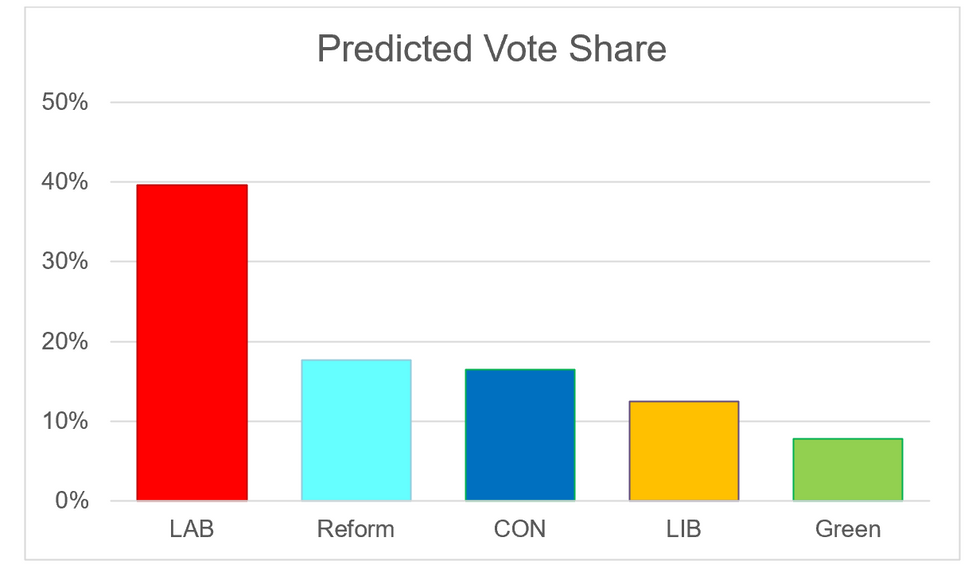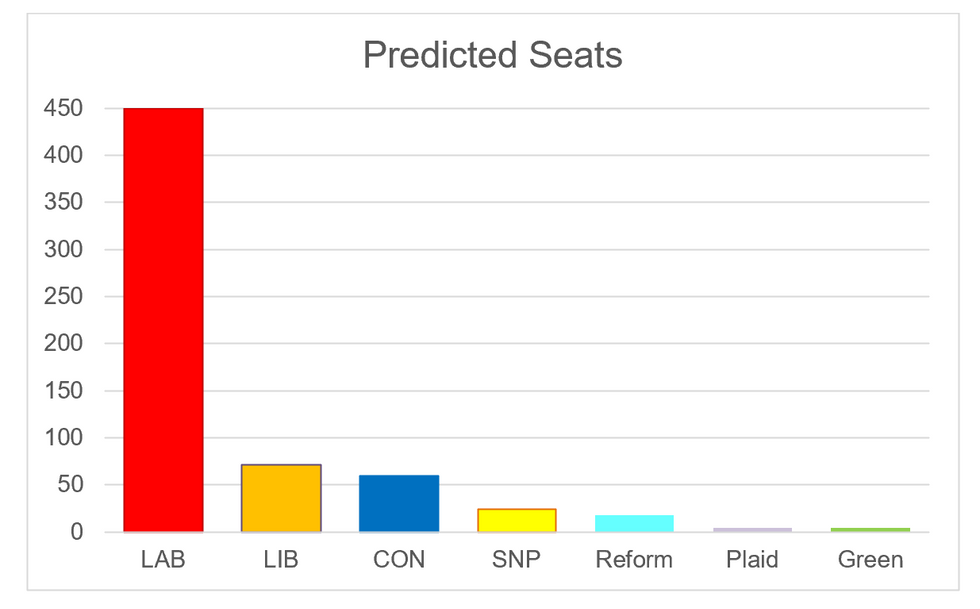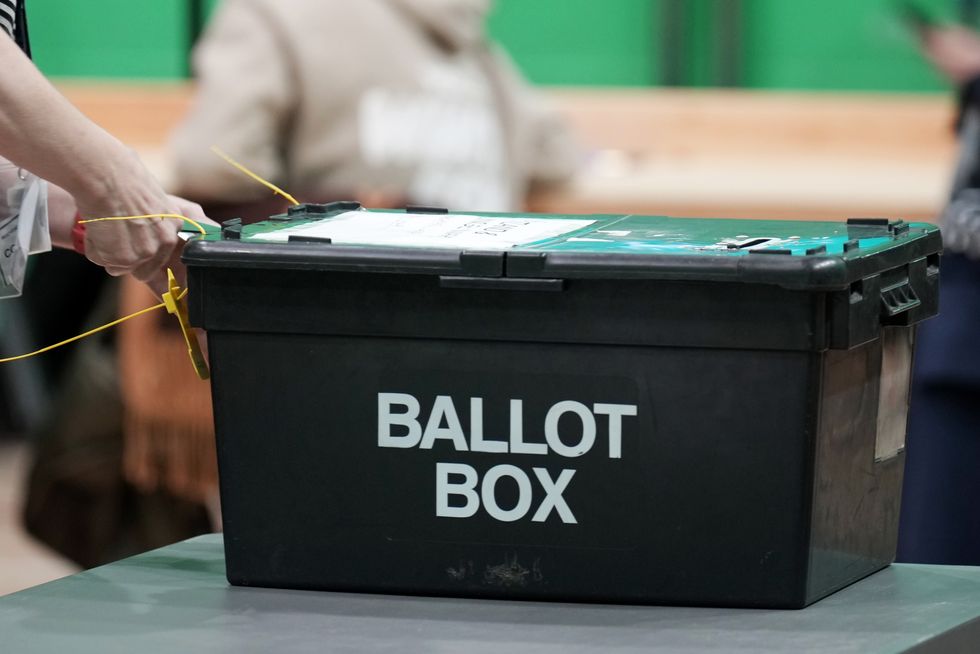A new poll for GB News shows Labour are set to win a majority of the vote share
PA/ Getty
In the UK MPs are chosen for the House of Commons using the First Past the Post voting system
Don't Miss
Most Read
Trending on GB News
As the final week of the general election campaign looms before us, polls are showing both the predicted vote share and seats for each political party.
Pollsters Electoral Calculus and Find Out Now conducted a large-scale poll for GB News using MPR to predict the results of the upcoming election.
A new MRP polling has revealed Labour will win a majority of the vote share followed by Reform UK, the Conservative Party, the Lib Dems and finally, the Green Party.
However, translated into the number of predicted seats the figures dramatically change with the Liberal Democrats taking the second highest number of seats after Labour, followed by the Conservative Party, the SNP and then Reform.

This graph shows the predicted vote share at the upcoming general election
Find out now and Electoral Calculus
The disparity in these results is down to the 'plurality-majority' electoral system used to elect Members of Parliament to Westminster called First Past the Post (FPTP).
For the purpose of the general election, the UK is divided into 650 areas or constituencies and at the election the candidate with the most votes becomes the MP.
However, voters are also taking part in choosing a government, and the party with the most MPs become the government.
It is commonly argued that this means there is a discrepancy between the percentage of votes received and its subsequent seats in parliament, meaning parties do not always gain fair representation.
Candidates do not need an outright majority to secure the seat and other parties are not represented even when receiving a significant share of votes.

This graph shows the predicted seats at the upcoming general election
Find out now and Electoral Calculus
So, the number of MPs a party has in power rarely represents their popularity with the public.
In the 2019 election, 45 per cent of the votes for the Conservatives were translated into 65 per cent of the seats.
In the predicted outcome for this election, Reform is polling 18 per cent of the vote but is only expected to return 18 seats.
However, the Liberal Democrats are only projected to receive 13 per cent of the vote share and are set to take 71 seats.
The FPTP system is also argued to encourage tactical voting or people not bothering to vote at all because they think their vote will have little chance of helping to elect their candidate.

The First Past the Post system can encourage tactical voting and people not turning up to vote
Getty
For example, in a constituency that has a 'safe' seat for the Conservative Party, there is little point in a voter choosing Labour as they are unlikely to have their candidate elected.
Therefore, voters may vote for a candidate they dislike instead of for a candidate they prefer.
The FPTP system is defended mostly on the grounds of its simplicity and ability to produce one representative for each constituency resulting in a strong constituency-MP relationship.
In 2011, the UK voted overwhelmingly against changing the voting system to the Alternative Vote, not proportional representation.
The alternative vote is a preferential voting system where voters rank candidates in order of preference.







